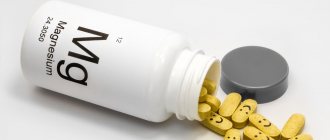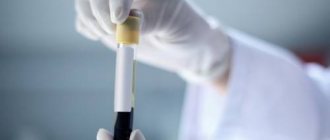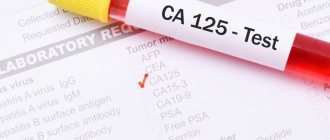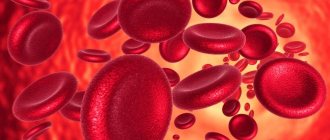It is extremely important for the body to produce growth hormone in sufficient quantities for children. During adolescence, all organs and tissues develop, and hormonal balance is responsible for the orderliness of this process.
Only by the age of twenty-one does the production of growth hormone (somatotropin) begin to decline.
But if its production drops at a younger age, this leads to the appearance of the disease.
What is somatotropin
The production of somatotropic hormone (GH) is carried out by the central organ of the endocrine system - the pituitary gland. Stimulation of growth occurs due to an increase in the production of proteins by cells, as well as through the regulation of the metabolism of fats and carbohydrates.
The influence of the hormone on strengthening the entire body and its rejuvenation is clearly expressed.
Let us list the main functions of somatotropin:
- formation of bone tissue (before puberty, bones increase, then the process of strengthening occurs);
- growth hormones promote the breakdown of fats (when their concentration drops, there is a risk of developing obesity);
- ensuring normal functioning of the heart and blood vessels (maintaining normal cholesterol levels prevents the development of atherosclerosis, heart attack, stroke and other diseases);
- formation of muscle tissue;
- affects the production of collagen, which affects the condition of the epidermis.
Hormones of the adenohypophysis
The adenohypophysis is responsible for a wide variety of processes occurring in the human body. The most important of them are:
- Stressful situations, psycho-emotional state of a person.
- Physical growth, development of internal organs, systems, cells and tissues of the body.
- Proper functioning of the entire human reproductive system.
- Starting and maintaining lactation processes (after the birth of a child in women).
In this case, complete control over the work of the adenohypophysis is exercised by the hypothalamus with the help of peptide hormones. But the anterior part of the pituitary gland itself ensures regulation of the proper functioning of the gonads, thyroid gland, liver, adrenal glands, and bone tissue.
Despite its miniature size, the anterior lobe of the pituitary gland also includes several components:
- Intermediate (located in close proximity to the neurohypophysis).
- Tubular (located in a special protective shell, the functions have not been studied enough to make any conclusions about its operation).
- Distal (the segment is responsible for the production of almost all biologically active substances).
It is in this lobe that endorphins are produced. These are special hormones that allow you to stimulate euphoria and help you enjoy the feeling of beauty (they are released in serious quantities by lovers and athletes during victories).
Causes of GH deficiency
The concentration of somatotropin at different stages of development of the human body is different. The maximum amount of hormones is observed in the prenatal period - from the fourth to the sixth month (100 times higher than in an adult).
Adolescents typically experience secretion peaks during development and puberty. From 20 to 30 years, the hormone content is stable. Then a gradual decrease in its concentration is observed. The lowest levels of growth hormone are typical for older people.
As a result of various pathologies, the natural development process fails. Growth hormone deficiency can be either inherited or a consequence of acquired diseases.
Even at the prenatal stage, there are risk factors, namely:
- mother's illness;
- delayed fetal development;
- placental insufficiency;
- infections;
- fetal trauma;
- other pathology.
The causes of genetic abnormalities are the following diseases:
- Down syndrome, Ulrich-Noonan syndrome, Shereshevsky-Turner syndrome, including other chromosomal diseases.
- inherited dwarfism;
- inborn errors of metabolism, etc.
Insufficiency of the pituitary gland functions can occur in a child as a result of the following processes:
- traumatic brain injury;
- malfunctions of internal organs;
- infectious diseases;
- tumors in the pituitary gland;
- surgical interventions related to the brain;
- irradiation of the head.
The appearance of somatotropin deficiency inevitably leads to disturbances in the development of children.
Side effects
- Enlarges the abdomen - it is generally accepted that growth hormone can influence the enlargement of the abdomen due to hyperplasia of internal organs (due to the fact that there are receptors for IGF-1 in the intestines and organs). Until now, this opinion has not been scientifically proven, but it is noted that some athletes have changes in their abdomen; this fact is directly associated with the influence of growth hormone. Regardless of this, the experience of people involved in sports suggests that if you use growth hormone according to the classical scheme, this will not lead to any changes in the abdomen. There is an opinion that changes in the abdomen (the term “GH gut” is found on the English Internet) has polyetiological roots, it is likely that using growth hormone in large doses, combining it with insulin, steroids, consuming food in large volumes.
- Affects the potency and function of the penis - growth hormone does not negatively affect sexual function.
- Suppresses the secretion of its own growth hormone - Professor Elmer M. Cranton, MD conducted studies on a group of 100 people and did not find any suppression of its own secretion.
- The tumor process - growth hormone sharply accelerates the division of tumor cells, in connection with this, scientists wondered whether growth hormone provokes neoplasms. It was decided to organize a retrospective study; it involved people who had previously used growth hormone; the incidence of tumor processes in them was practically no different from the data for the other subjects, and this may indicate that growth hormone does not have a carcinogenic effect.
If you stick to the prescribed dosage, growth hormone very rarely causes any side effects. Almost all of them are reversible if they occur. It has also been proven that growth hormone preparations have the ability to rejuvenate the body: improve physical fitness, reduce the level of bad cholesterol, improve skin properties, strengthen bones and ligaments, and also have other positive effects.
The most common side effects of using growth hormone to gain muscle weight include bloating, stomach pain, and joint pain. If you take drugs correctly, you can avoid these complications. You should not immediately take the maximum dose, but start with half the dosage, increasing it slightly every 2 days until the volume of the drug reaches the prescribed amount.
Before you start taking steroids to gain muscle mass, you must be tested for tumor markers specified by your doctor. People with cancer are prohibited from using anabolic steroids, as they can cause tumor growth.
To be completely honest, it must be said that there is a need for growth hormone injections for some groups of the population. Thus, HGH can be used to treat children and adults who have significant growth hormone deficiency. However, endocrinologists from around the world strongly recommend not to use injections unless absolutely necessary, as a means of losing weight, increasing height, or for rejuvenation.
One of the main dangers of human growth hormone injections is the uncontrolled effect on the concentration of IGF-1 in the blood. This can lead to serious health problems.
- Swelling in the arms and legs.
- Carpal tunnel syndrome and arthritis symptoms.
- Headaches and general muscle pain.
- Diabetes.
- Abnormal growth of bones and internal organs.
- High blood pressure.
- Bloating.
- Hardening of the arteries.
For these reasons, human growth hormone injections should always be done carefully and with the help of a qualified practitioner who has clinical experience in managing your type of hormone deficiency.
Any pharmacological drug has its side effects, somatotropin is no exception. There are many side effects, all of which must be remembered before prescribing the drug. The benefits of taking it should exceed all negative effects on the body. Otherwise, the drug may be harmful.
Common side effects of growth hormone include:
- tunnel syndrome;
- fluid retention in the body;
- increased blood pressure;
- reactions at the injection site;
- decreased thyroid function;
- acromegaly;
- increase in the size of internal organs;
- cardiac muscle hypertrophy;
- weakness in the morning.
All these side effects occur when using high doses of GH. With adequate drug intake, most of them are absent.
| Side effects | Description |
| Carpal tunnel syndrome | It manifests itself as numbness and pain in the extremities, due to the rapid growth of the muscles of the arms and legs, which leads to compression of the nerves. When the dose is adjusted or GH is discontinued, the symptom disappears on its own. |
| Fluid retention in the body | Taking GH slows down the elimination of fluid in the kidneys. This metabolic fluid is essential for increasing muscle tone and volume. In addition to muscle tissue, water can accumulate in other areas. At the same time, it causes swelling and ascites (fluid in the abdominal cavity). To prevent swelling from occurring, you should reduce your salt intake, drink less water, and avoid drinking alcohol. |
| High blood pressure | This effect can be explained by water retention in the body and an increase in circulating blood volume. Blood pressure can be normalized by adjusting the dose of somatotropin and medications that lower blood pressure. |
| Reactions in the area of injections | Lipoatrophy is a reduction in adipose tissue at the injection site, as somatotropin destroys fat cells. Swelling, local edema, redness of the skin, and itching may appear. When the drug is discontinued, all phenomena go away on their own. |
| Acromegaly | With high doses of GH, an increase in the hands, feet, nose, lower jaw, and brow ridges is observed. With prolonged use of GH, the voice becomes rougher, joints begin to ache, and their mobility decreases. It is necessary to discontinue GH and take a break for 3–4 months. |
| Hypertrophy of internal organs | Internal organs enlarge due to growth hormone stimulation of their cells. There is an enlargement of the liver, spleen, heart and other organs. |
| Morning weakness and daytime sleepiness | This is a reaction to taking large doses of the drug. Goes away after GH withdrawal. |
Other possible side effects that may occur when taking GH:
- muscle pain;
- otitis media, hearing loss;
- gynecomastia;
- blood diseases;
- an increase in nevi, the degeneration of their cells into tumor cells (the development of malignant tumors has not been proven);
- progression of scoliosis;
- pancreatitis.
Read more: Insulin course for weight in bodybuilding reviews
When taking growth hormone, you must consult your doctor and strictly follow the instructions.
There is scientific evidence for the absence of some side effects. Their main condition is to take the dosage of somatostatin regulated by the instructions. These include the following side effects:
- increase in abdominal size;
- decrease in the concentration of your own growth hormone;
- suppression of potency;
- the appearance of tumors.
Enlarged abdomen – the size of the abdomen may increase due to hypertrophy of internal organs. This growth hormone side effect may occur if an athlete or bodybuilder takes very high doses of growth hormone. Taking GH as directed does not cause this phenomenon.
Decrease in own hormone - taking high doses of somatotropin causes a decrease in the production of own hormone GH. This is not observed with the recommended intake of GH. Sometimes the concentration of your own growth hormone may decrease, but very slightly, without causing harm to the body.
The impact of GH on potency - scientists have proven that taking somatotropin in a normal dosage does not affect the activity of the male reproductive system. Taking large doses of the hormonal drug also did not cause a decrease in potency.
Signs of insufficient growth hormone production
External indicators in newborns are such that the lack of growth hormone does not manifest itself in any way. Such children will seem absolutely healthy and have the same age parameters as their peers. Growth retardation begins at the age of two.
You need to know that the normal rate of “growth” is 5-7cm per year. If the child is stunted and these values are slightly / significantly lower, you should contact an endocrinologist. It is important to detect GH deficiency at as young an age as possible. This will allow us to establish the causes of growth retardation, carry out timely treatment, and prevent delays in the baby’s development.
Not receiving enough growth hormone, the body reacts with a “release” of characteristic changes. The following symptoms are typical:
- sunken bridge of the nose, small facial features;
- disproportionately small hands and feet compared to the body;
- shortened neck and rounded head.
Overweight is often observed (however, in the first year of life, obesity is not typical for early manifestations of growth failure). Poorly formed bones cause frequent injuries.
There is rapid fatigue from physical activity due to poorly developed muscles. The skin of such children is thinned, pale, and lacks the function of sweating. Hair can be dull and brittle.
Puberty reveals new signs of the disease:
- high voice;
- violations of proportions in the structure of the body;
- significant growth retardation;
- delayed sexual development;
- lack of hair in the groin and armpit areas.
Boys are characterized by such disorders as enlarged mammary glands and the appearance of fatty deposits typical of women.
In girls, on the contrary, mammary glands do not develop. Due to the delayed development of the reproductive system, the first menstruation occurs later than normal.
It is difficult for such children to adapt to society. By the end of school, their height is usually from 120 to 130 cm. Later, after the formation of the whole organism is completed, it does not exceed 140 cm.
Description and structure of the pituitary gland
The pituitary gland begins to develop around the end of the first month of pregnancy. At the same time, the pituitary arteries develop, which are responsible for delivering a sufficient volume of blood to this part of the brain. The section is located in the sphenoid cranial bone and is held there thanks to a fixing shell. The gland has a round shape, miniature overall dimensions (no more than 1 cm in length and 1.2 cm in width), and modest weight - approximately 6-8 mg.
The main purpose of the gland is to produce various hormones. The structure is divided into three parts, so the structure of the pituitary gland includes: the posterior and anterior parts (neurohypophysis and adenohypophysis, respectively), as well as the middle lobe, which is not described as often as the first two. The adenohypophysis is relatively large in size, is responsible for the production of a larger volume of hormones, and is more functional when compared with the neurohypophysis. The posterior lobe of the pituitary gland makes up approximately 1/5 of the weight of the entire organ.
If a woman is confident and convinces herself that she is pregnant, but in fact there is no pregnancy, then there is a high probability that after some time special mechanisms will be launched, her mammary glands will enlarge, and corresponding changes will occur in the uterus and abdomen. This indicates a clear connection between the pituitary gland and the cerebral cortex.
Diagnostics
Making a diagnosis of GH deficiency is a difficult task. In addition to external signs, the health and growth of each parent, heredity, and illnesses that occurred in the child are taken into account.
The following types of examination are used:
- radiography (to establish bone age);
- reconciliation of growth rates from the moment of birth using specially developed tables;
- analysis of the level of insulin-like growth factor (IGF);
- diagnosis by a geneticist;
- analysis for growth hormone using substances that stimulate the secretion of growth hormone.
In the latter case, stimulation of production is necessary, since the concentration of the hormone in the blood is not constant throughout the day. You can take the test multiple times at 20-minute intervals or use stimulants.
Hormones of the posterior pituitary gland
The posterior part of the pituitary gland produces many neurohormones: isotocin, valitocin, asparotocin, mesotocin and others, which give the human body many positive effects.
One of the most well-known hormones of the posterior lobe of the pituitary gland is oxytocin, which, like prolactin, is important specifically for women. Oxytocin hormone has a stimulating effect on the functioning of the muscles of the uterus, controls the secretion of breast milk, and has a positive effect on the formation of maternal instinct.
In a general sense (if we take into account men and women), oxytocin has a significant effect on human behavior, mental state and character, and sexual arousal. If it is sufficiently maintained, it is easier for a person to react to non-stressful situations. Oxytocin also has a beneficial effect on male potency.
How to increase growth hormone production
If it is possible to eliminate the cause of GH deficiency, therapy is aimed at eliminating it (for example, removing a pituitary tumor).
In other cases, until recently, there was no effective treatment for this disease. Today, thanks to the artificial synthesis of somatotropin, hormonal therapy has become possible.
The endocrinologist prescribes taking the required amount of growth hormone. The synthetic hormone has two forms of release: tablets and liquid and powder for injection.
The second option is more effective, since the active substance immediately enters the blood. Usually the drug is administered twenty minutes before going to bed (this way the body will accept it better).
When using pills, somatotropin can be partially or completely digested in the gastrointestinal tract.
In parallel, glucocorticoids are prescribed to form the skeleton. Estrogen and progosterone help to hasten the onset of puberty for teenage girls, and testosterone for boys.
Synthesized GH has a side effect (suppression of thyroid function), so at the same time they practice taking hormones to stimulate the thyroid gland.
To treat chromosomal syndrome, in addition to normalizing mental activity and concomitant pathologies of organs, growth stimulation and correction of disorders in the sexual sphere are also carried out.
In addition to medicinal methods, there are natural ways to increase the production of somatotropin. Its synthesis increases during sleep, especially during the first 2 hours. Hence the recommendation: sleep at least twice a day. When sleep deficiency occurs, the release of GH immediately decreases. With the restoration of the regime, everything returns to normal.
A balanced diet is no less important for the production of somatropin. Avoid eating fatty foods, which reduce the production of growth hormone. It is advisable to introduce foods containing protein and other beneficial substances into the diet. Let's list these products:
- cottage cheese;
- nuts;
- milk;
- beef (lean);
- poultry meat;
- chicken eggs;
- fish;
- legumes;
- buckwheat, oatmeal;
- veal;
- cheese.
It is not recommended to eat hard-to-digest foods before going to bed. Overloading the body with it will not leave the strength to produce somatropin.
Taking multivitamin complexes has a positive effect. They should include vitamins, minerals, amino acids.
Positive results are also observed from physical activity. The secretion of growth hormone is positively influenced by any physical activity - from simple walking to lifting weights. The greatest effectiveness is achieved by a combination of anaerobic (strength) and aerobic (cardio) exercise.
Providing growth with somatropin in children is stimulated by emotional stress: overexcitation, stressful circumstances, starvation.
High blood sugar has a negative effect. Control over this indicator is also necessary.
Production and functions
Somatotropin is a protein substance produced by the pituitary gland, an endocrine gland located near the brain. It belongs to anabolic steroids. It is called growth hormone because in adolescents it causes the growth of long bones. Thanks to him, a person becomes taller. But this is not the only consequence of the functioning of the substance. The hormone helps build muscle and burn excess fat.
Growth somatotropin is a peptide and contains just under 200 amino acids. Growth hormone in sports is prohibited for use as a doping. But, thanks to its properties, somatropin has found application in bodybuilding. Lovers of biceps and triceps can buy it in online stores. In addition, Somatropin is used to treat dwarfism in children.
https://www.youtube.com/watch?v=6mprQXkkMaA
Having a direct effect on the endocrine glands, somatotropin accelerates the production of a number of growth factors and muscle mass, and also actively regulates the metabolism of human bone tissue.
Growth hormone inhibits the activity of enzymes that have a destructive effect on amino acids, regulates collagen synthesis in bone tissue, skin and other tissues and organs. Causes an increase in the size and number of cells of the thyroid gland, adrenal glands, liver, gonads, thymus gland and muscles.
Growth hormone enhances the breakdown of fats, as a result of which the concentration of fatty acids in the blood increases, which suppress the effect of insulin on the membrane transport of glucose.











